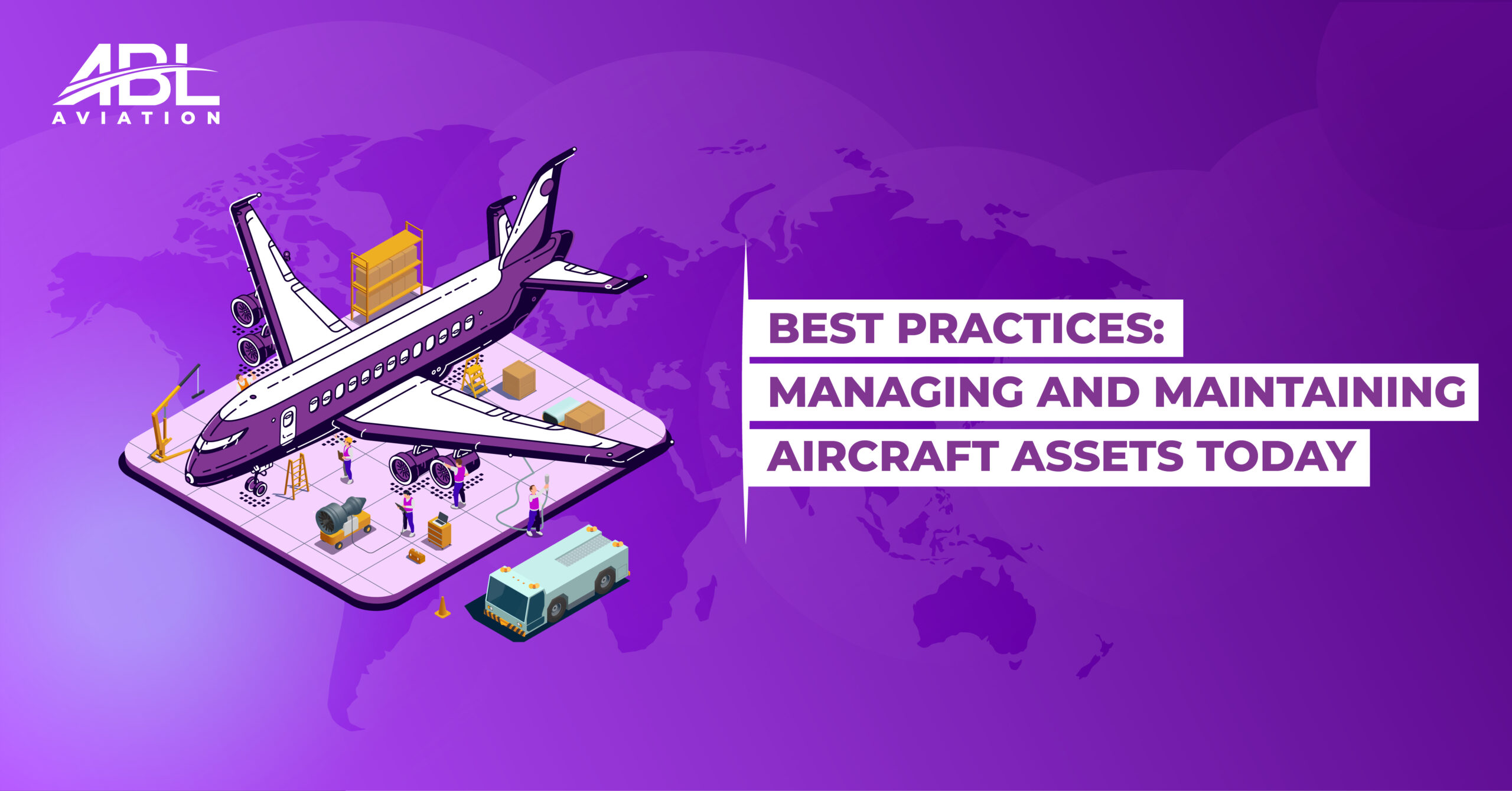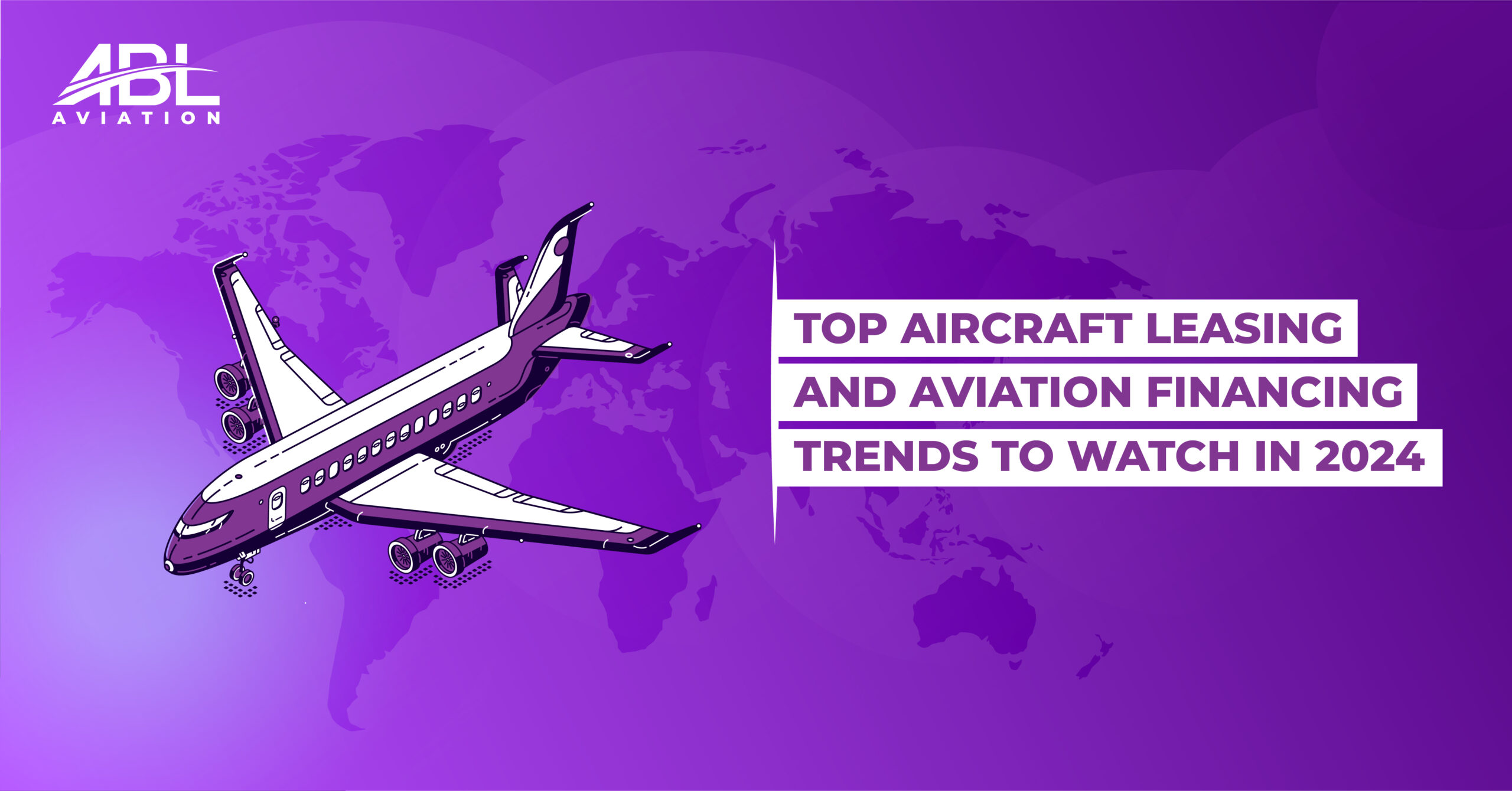
Best Practices for Managing and Maintaining Aircraft Assets Today
In the competitive aviation industry, maintaining and protecting the condition of aircraft assets is crucial. This not only ensures the safety of passengers, crew, and stakeholders but also improves operational efficiency and optimises downtime, leading to improved safety and financial sustainability. At ABL Aviation, we understand the importance of effective aircraft asset management, so we have compiled a list of best practices to help you navigate the complex landscape of aircraft management. This article will explore five key strategies supported by industry data and expert insights.
• Digitalisation in Aircraft Maintenance
The integration of digital tools, including artificial intelligence, has not only transformed aircraft maintenance and management but also significantly improved safety measures. Technologies like Aircraft Health Monitoring Systems (AHMS) and Artificial Intelligence (AI) enhanced predictive maintenance tools have improved the operational reliability and lifespan of aircraft, ensuring passenger and crew safety. AI significantly improves operational efficiency by optimizing stock levels, allocating resources more effectively, and reducing aircraft grounding time. AI enables air-to-ground communication, further streamlining the process by allowing maintenance teams to be ready when the aircraft lands. A study by Roland Berger Strategy Consultants found that advanced technologies can reduce operational disruptions by up to 30%. This demonstrates the profound impact of digital and AI technologies on improving maintenance processes and safety standards and ensuring significant cost savings through optimized operations.
FlyForward, by ABL Aviation, is another example of digitalization in aircraft asset management. It uses proprietary technology to comprehensively analyse and project the lifecycle from lease acquisition to the end of the term and beyond. Linked to an extensive cost and maintenance schedule database, it uses data modelling and automated analysis to provide investors with precise projections of maintenance requirements and adjusted asset values throughout the investment period. This translates into improved efficiency, lower technical risks, and greater value for investors and airlines when optimising the redelivery conditions and maintenance compensations.
• Staying Ahead with Proactive Maintenance
Proactive maintenance, while avoiding over-maintenance, is critical in aviation because unexpected repairs have high costs and severe safety implications. Implementing scheduled inspections and predictive analytics allows airlines to identify and address potential issues before they lead to system failures. The Federal Aviation Administration (FAA) strongly supports such measures, recognising their significant contribution to operational safety. Also, the use of artificial intelligence (AI) and machine learning in predictive maintenance improves the accuracy of failure predictions, thereby improving safety and maintenance efficiency. However, as these technologies continue to evolve, there is room for improvement, promising even better results in the future.
The economic benefits of AI-driven analysis extend beyond safety improvements, as they considerably reduce unscheduled maintenance costs. This is important as global commercial aircraft expenses on Maintenance, Repair, and Overhaul (MRO) are projected to rise from $101 billion last year to $104 billion in 2024. Predictive maintenance provides a clear path to financial stability for airlines. Lessors and owners value it highly because it improves asset management and encourages confidence in the system. This efficiency reduces the operational burden on airlines by streamlining the redelivery process and minimising the frequency and intensity of lessor inspections, resulting in improved asset lifespan and value.
• Continuous Training for Maintenance Teams
The complexity of modern aircraft requires ongoing, specialised training for maintenance-related personnel. The European Union Aviation Safety Agency (EASA) emphasises the importance of such training for maintaining high safety and efficiency standards in aircraft operations. Well-trained technical staff are crucial for improving aircraft usability and complying with strict safety regulations. It is important to recognise that safety should not be a competitive factor among airlines. Instead, competition should focus on services and product offerings. Stakeholders, including authorities, OEMs, airlines, MROs, and owners, are collectively responsible for ensuring safety. Moreover, the economic value of aircraft is a growing consideration for airlines, especially evident during events like the COVID pandemic, where asset management decisions, such as Sale-Leasebacks (SLBs) or direct sales, greatly depended on the aircraft’s maintenance history and the quality of records kept. Properly maintained aircraft with comprehensive and quality documentation retain a higher value.
Investing in specialised training programmes is necessary for aviation organisations to maintain high operational standards. Human Factors Training, which focuses on human behaviour’s psychological and physiological aspects, is essential for improving soft skills and awareness, allowing individuals to function effectively within a system. This training is distinct from hard skill programmes like Flight Technical Integration Systems, regulatory compliance, and technical qualifications specific to aircraft types, which keep technical personnel up-to-date on the latest technical standards and practices. Safety Management Systems (SMS) training also plays an important role by providing practical risk identification and prevention strategies. Collectively, these training programmes are vital for reducing maintenance times and delays, improving fleet readiness, extending aircraft service life, ensuring compliance with regulations, and reinforcing the safety culture within aviation organisations.
• Compliance with Regulatory Standards
In the aviation industry, strict compliance with established regulatory standards is not just important but mandatory. Compliance is crucial for ensuring safety, maintaining operational integrity, and avoiding legal consequences. Globally recognised regulatory bodies like the International Civil Aviation Organization (ICAO), The Federal Aviation Administration (FAA) in the United States, and the European Union Aviation Safety Agency (EASA) play an important role in enforcing these standards. These authorities are highly regarded and often serve as models for other regulatory bodies worldwide. Their mandates include ensuring that all aircraft hold up-to-date airworthiness certificates and meet safety and performance standards for each flight, as well as protecting both passengers and crew and asset owners. Additionally, airlines must conduct regular, thorough maintenance inspections and certify that all crew and maintenance personnel are adequately trained and qualified. The strength of these regulations significantly benefits asset owners by safeguarding the value and longevity of their investments.
An additional essential requirement is the implementation of Safety Management Systems (SMS), which enable airlines to proactively manage safety risks through a structured and systematic approach. Environmental standards are equally important, featuring strict guidelines on emissions and noise control to minimise the impact of air travel on the environment. For example, the Carbon Offsetting and Reduction Scheme for International Aviation (CORSIA) globally and the European Union Emission Trading System (EU-ETS) in Europe both mandate measures to control and reduce aviation activities’ carbon footprint. Complying with these environmental standards not only helps airlines avoid costly penalties and restrictions but also boosts their reputation and global competitiveness by highlighting their commitment to environmental responsibility. For example, Air France’s fleet renewal initiative, which includes integrating more fuel-efficient aircraft, has been strongly supported by ABL Aviation, facilitating the delivery of six A220-300 aircraft with seven more deliveries expected. These aircraft reduce fuel consumption and emissions by 25% compared to previous-generation models. This initiative reduces the airline’s environmental impact and contributes to its growth by improving customer service and product offerings.
• Sustainable Maintenance Practices
The aviation industry is undergoing a significant shift towards sustainable maintenance practices. This focus is not solely driven by the need to comply with stricter environmental regulations. It also offers airlines a path to improved operational efficiency and cost reduction. One key strategy gaining popularity is using recertified parts from retired aircraft. This approach shortens lead times for obtaining parts and significantly lowers costs compared to relying solely on purchasing new ones. Financial incentives are further encouraging airlines to adopt these eco-friendly practices. For instance, ABL Aviation played a key role in facilitating sustainability-linked financing for Wizz Air’s acquisition of three fuel-efficient A321neo aircraft. This initiative directly supports Wizz Air’s commitment to reducing CO2 emissions and aligns ideally with the aviation industry’s ambitious goal of achieving net-zero emissions by 2050.
Furthermore, the transition to Sustainable Aviation Fuels (SAF) is becoming an essential strategy in the fight against carbon emissions. Airlines like Wizz Air and Air France are leading the charge by setting ambitious targets for SAF integration. To achieve this, Wizz Air has committed to using SAF in 10% of its flights by 2030 and has partnered with companies like Neste, a leading producer of SAF, to secure the annual purchase of 36,000 tonnes of SAF from 2025 onwards. This ensures a steady supply of this sustainable fuel. On the other hand, Air France is introducing more fuel-efficient aircraft into their fleet as part of a renewal strategy while actively implementing SAF usage. These combined efforts strengthen their environmental responsibilities and allow them to maintain growth while fulfilling stricter environmental standards.
The ABL Aviation Advantage: Confidence Through Expertise
The fast-paced aviation industry requires sophisticated and proactive maintenance strategies to ensure safety, efficiency, and financial success. ABL Aviation prioritises this commitment through advanced digital tools like the FlyForward system, complemented by an innovative and robust infrastructure that supports seamless connectivity and a strong database. This approach reflects our commitment to thinking about the future and the environment, considering the needs of the next generations. Continuous training and strict regulatory compliance complement our comprehensive approach, ensuring the highest standards in aircraft asset management. Anas Bounahmidi, our Chief Technical Officer, elaborates, “We do not just manage independent aviation assets; we optimise them as part of a wider fleet. Our deep understanding of our airline partners expectations, cutting-edge technologies and strong technical expertise ensures that each asset under our portfolio meets the highest safety, performance, and reliability standards while providing expected returns to investors. Looking at all the different phase of aircraft lifecycle, we provide solutions to extend asset life and value, providing our airline partners and investors with the confidence that their assets are managed with professionalism and foresight cautious of the environmental challenges.”
Go Back







